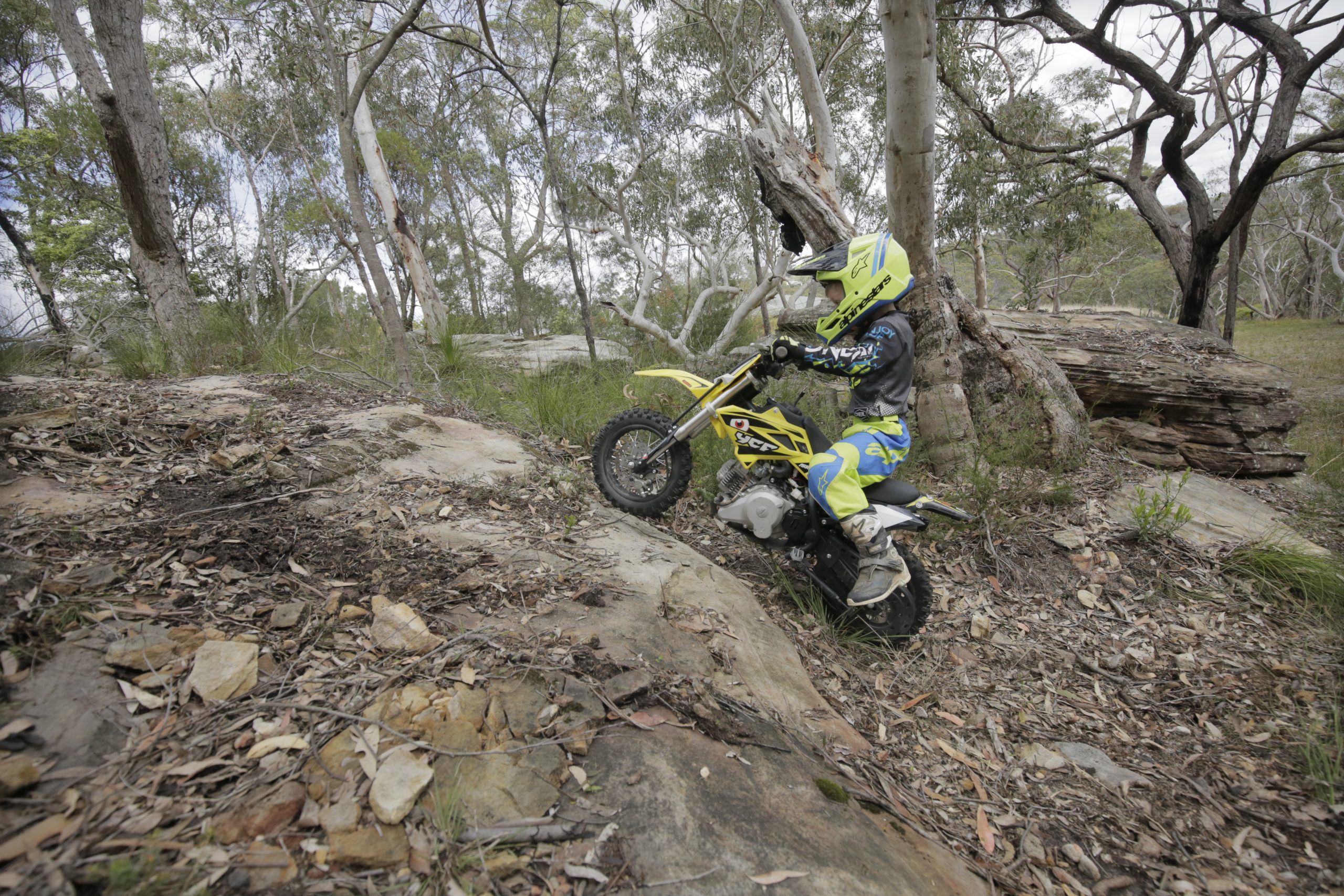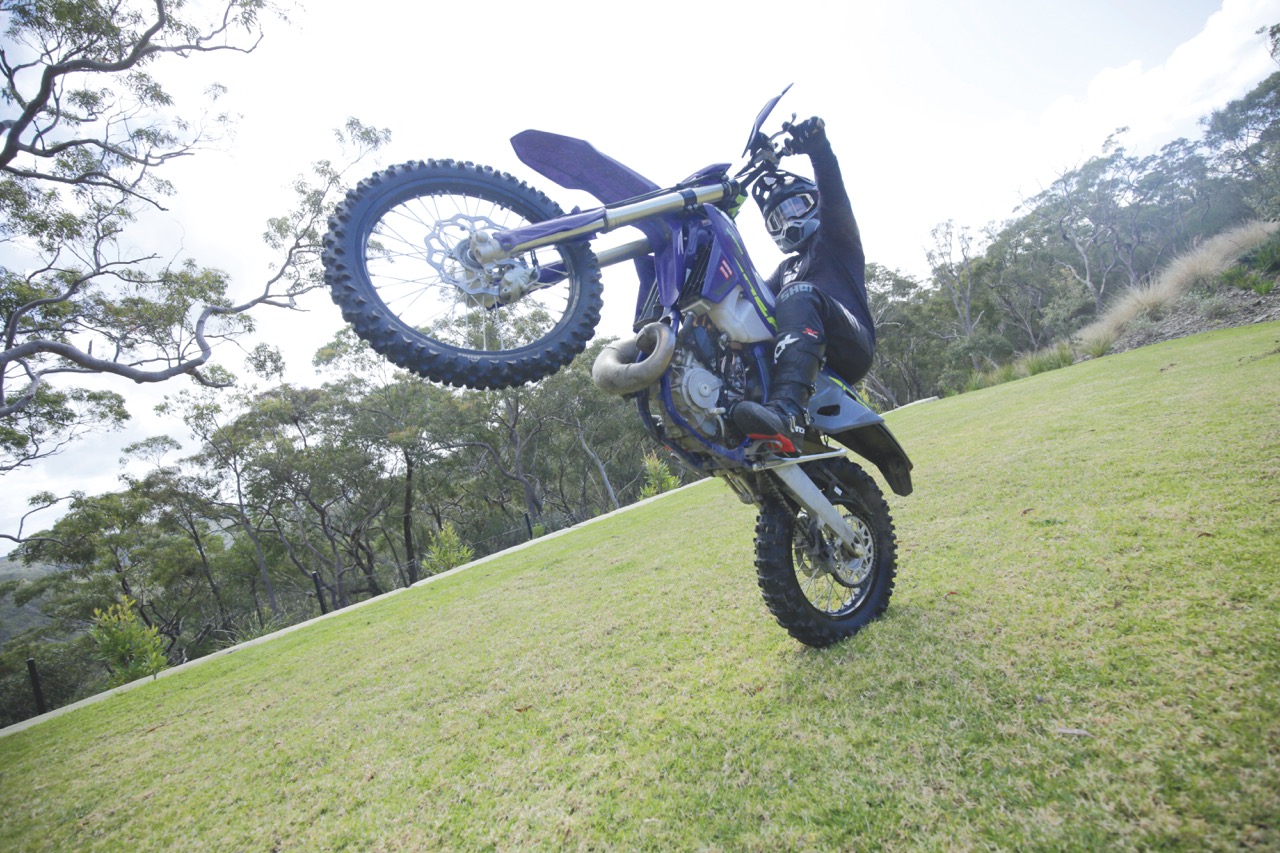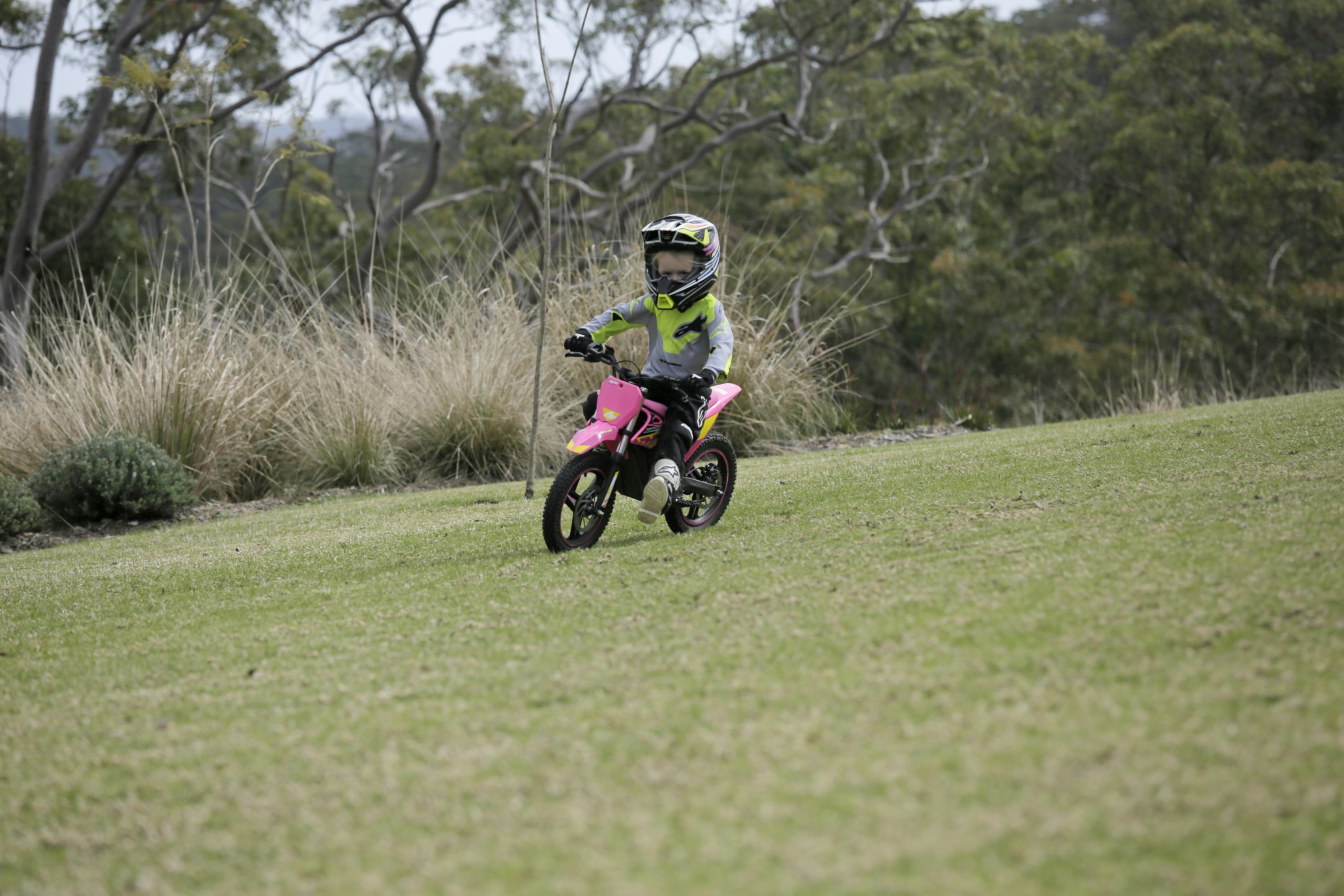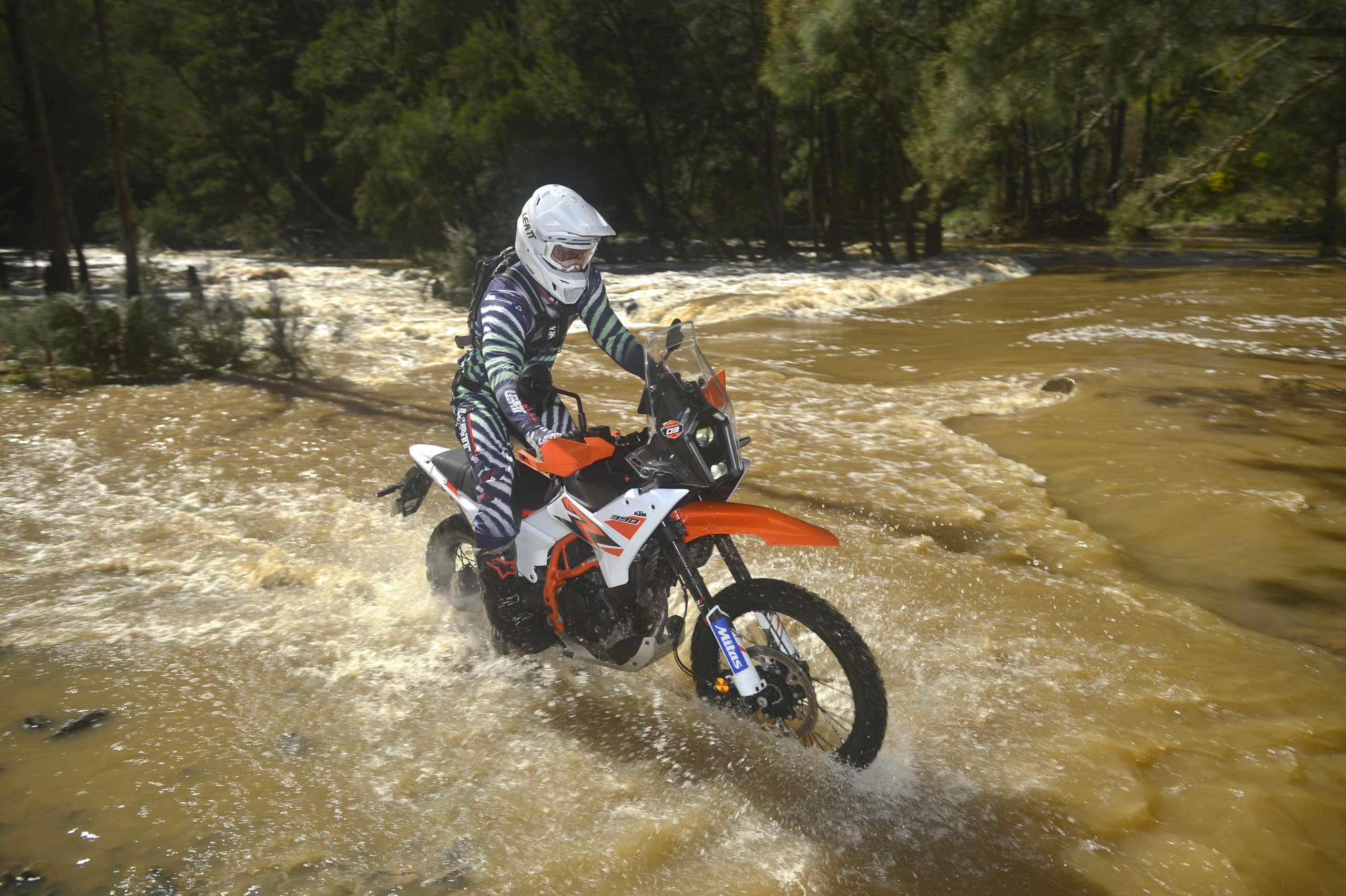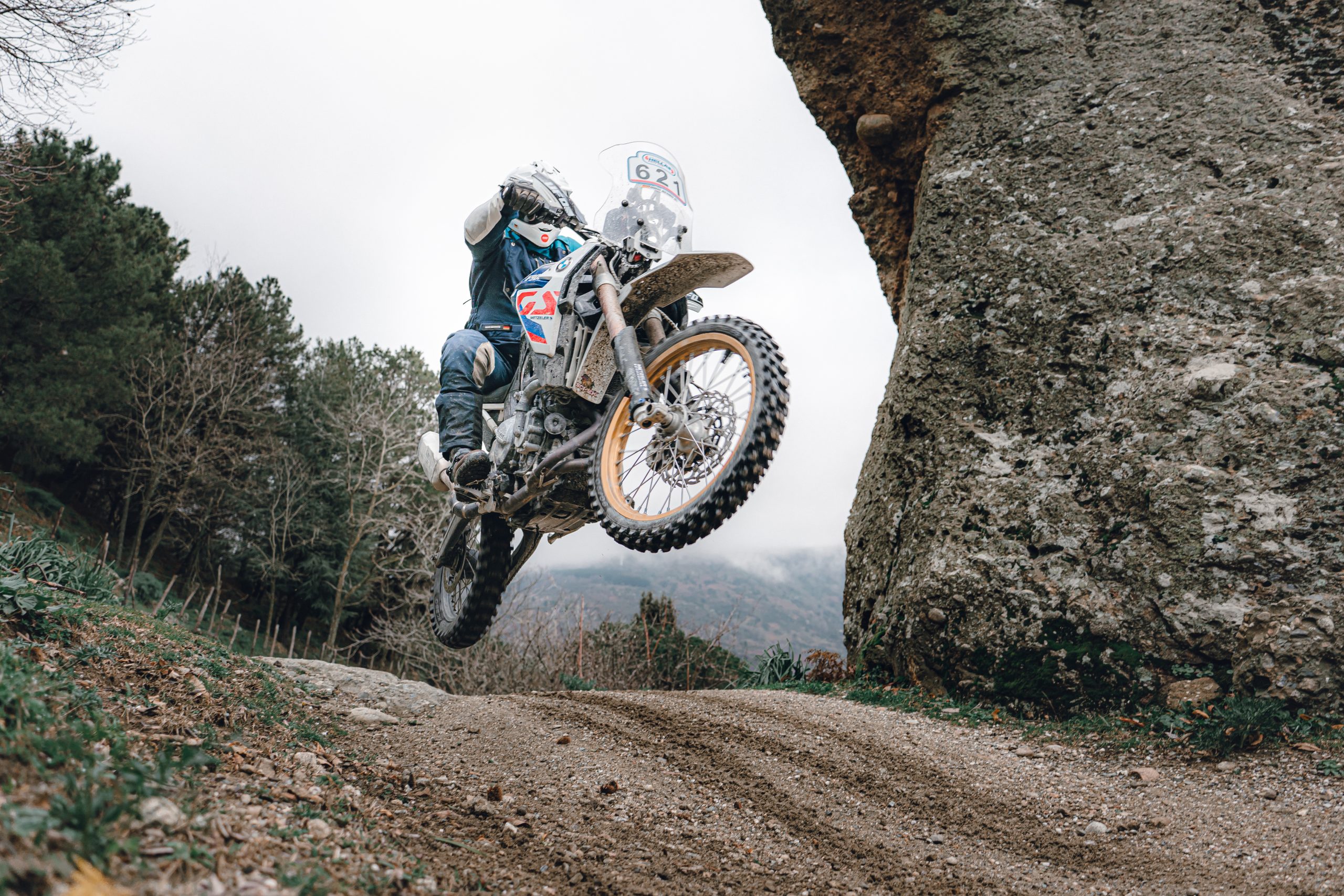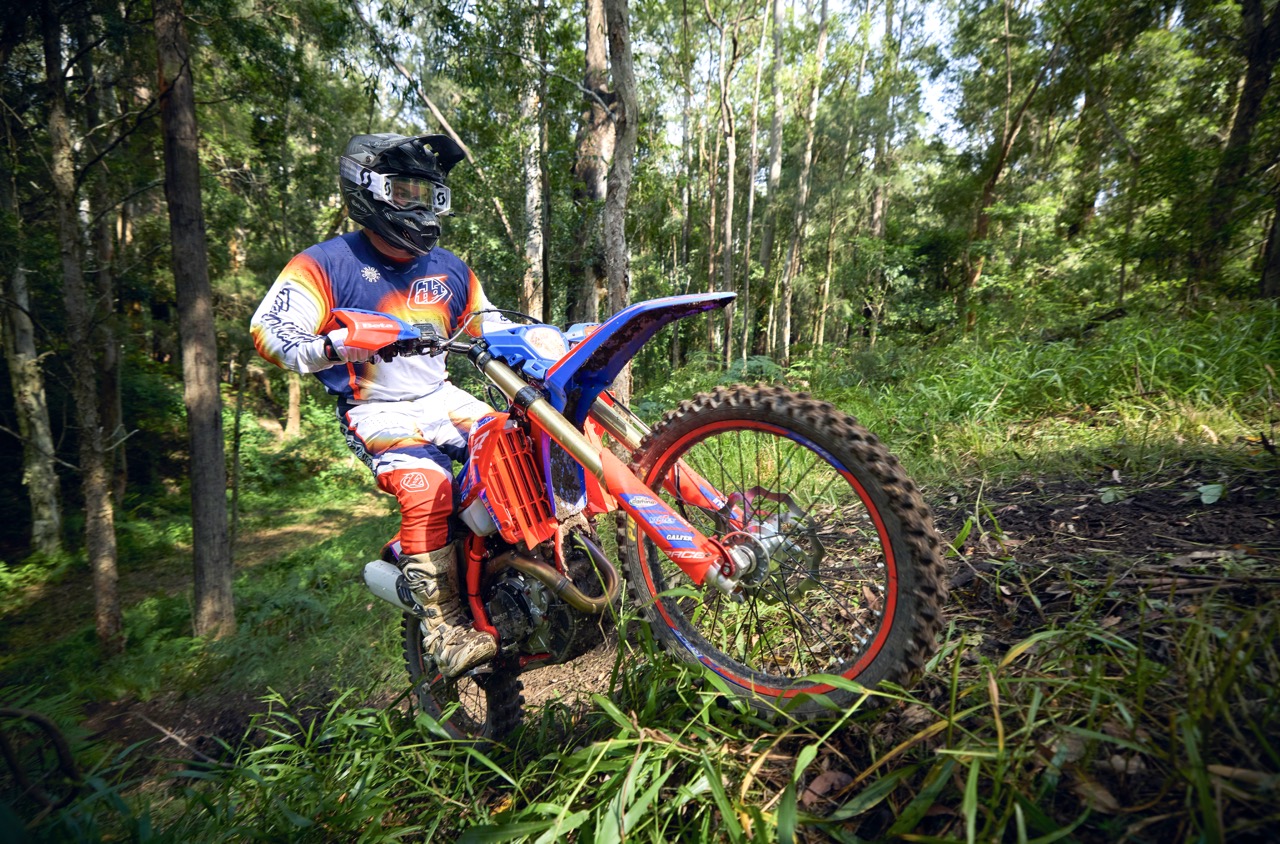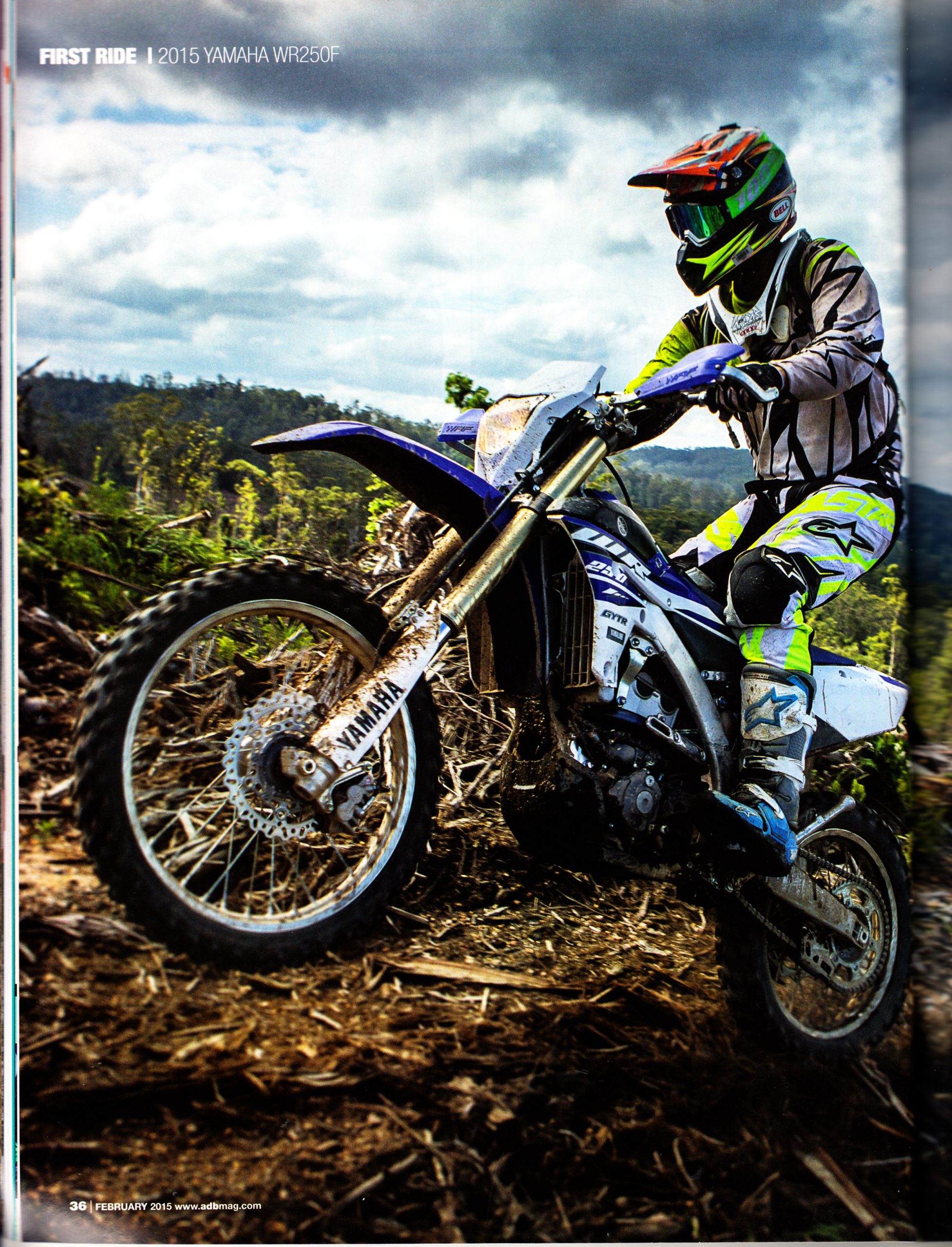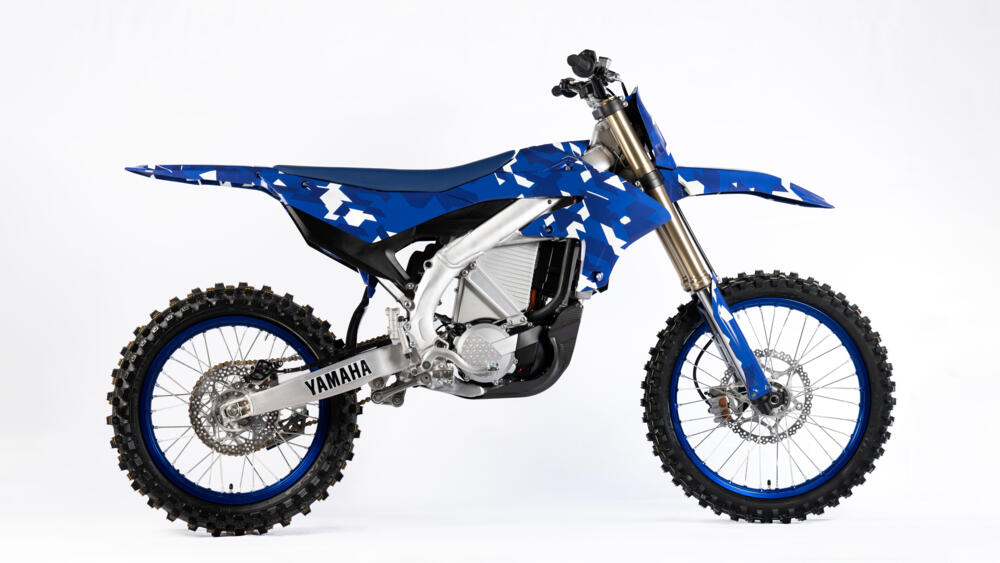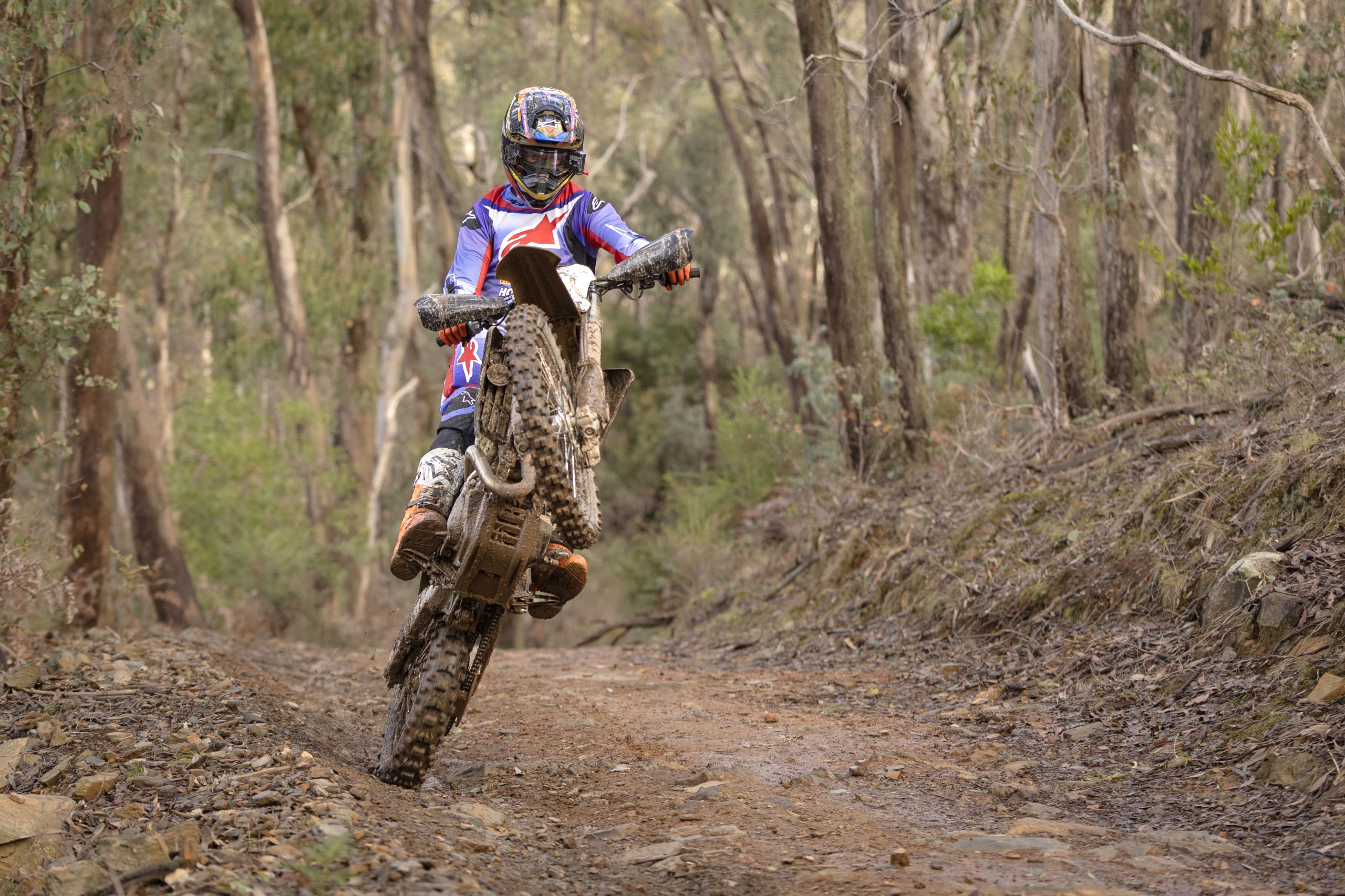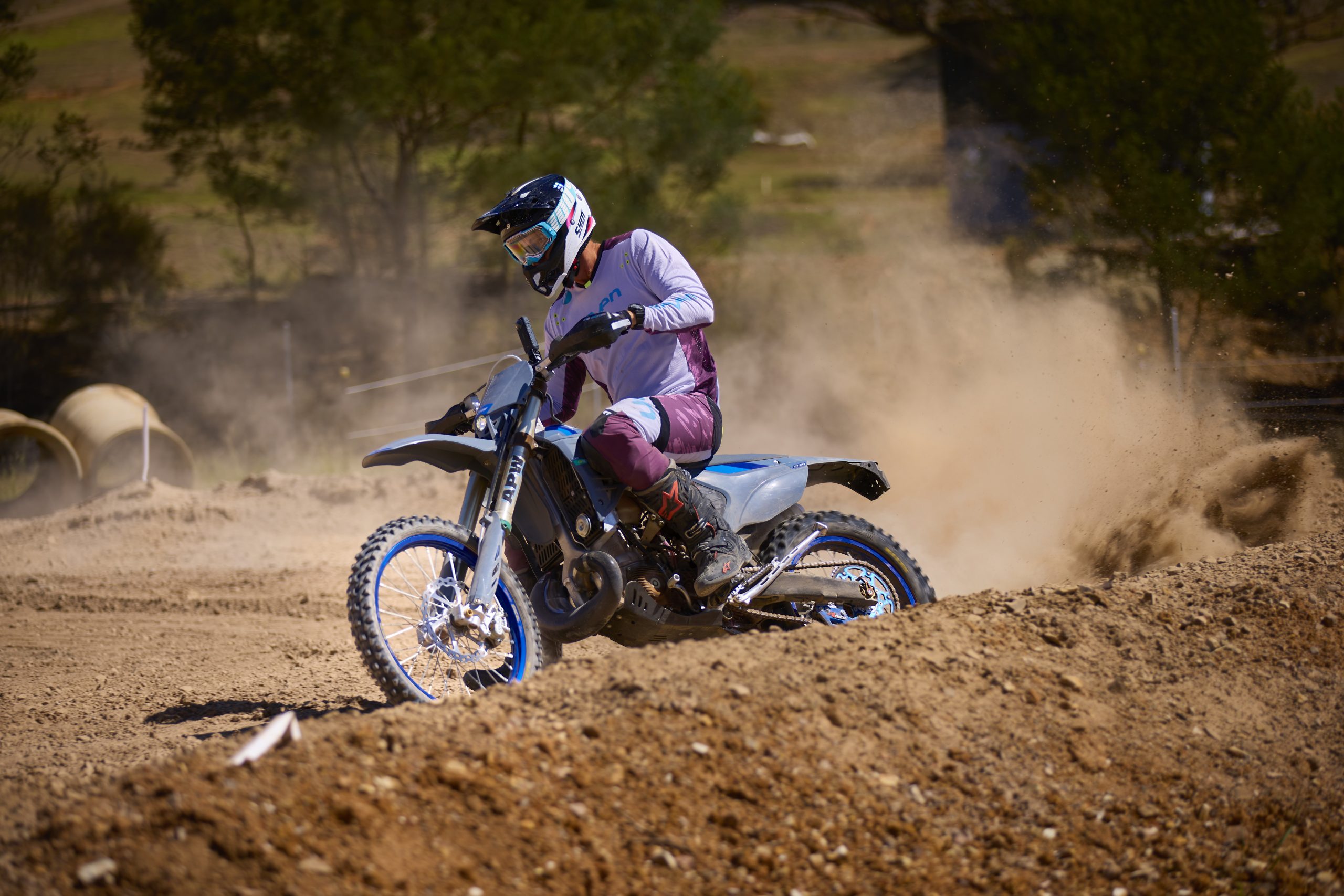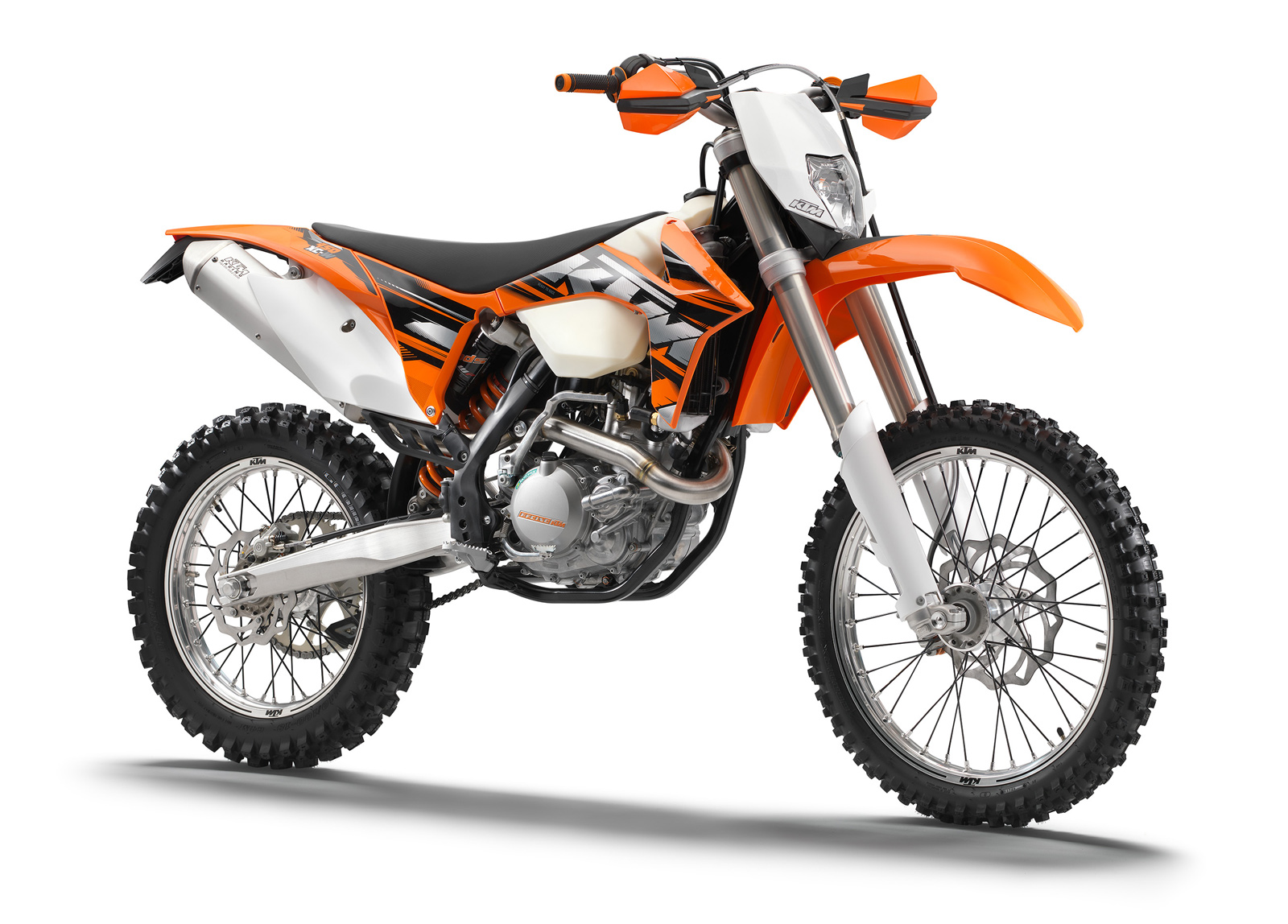You have to look all the way back to 2004 when Glenn Kearney raced a Yamaha YZ250 to find the last two-stroke that won the Hattah Desert Race outright. Since then, the top step of the Hattah, as well as basically every other Australian desert race, has been occupied by a 450cc or larger four-stroke machine. So we thought we’d look at the Sherco 500 SEF Factory v 300 SEF Factory.
At the 2024 Hattah Desert Race, the Motul Pirelli Sherco Factory team interestingly placed both of their riders on opposite machines. Nathan Trigg piloted a 500 SEF Factory four-stroke and Jonte Reynders piloted a 300 SE Factory two-stroke. Sherco kindly offered ADB the chance to ride both of its desert team bikes back-to-back, and with it being 20 years since a two-stroke Hattah win, we figured it the perfect opportunity to see if the smoker was still capable of holding its own against the thumper in this Sherco 500 SEF Factory v 300 SEF Factory test.
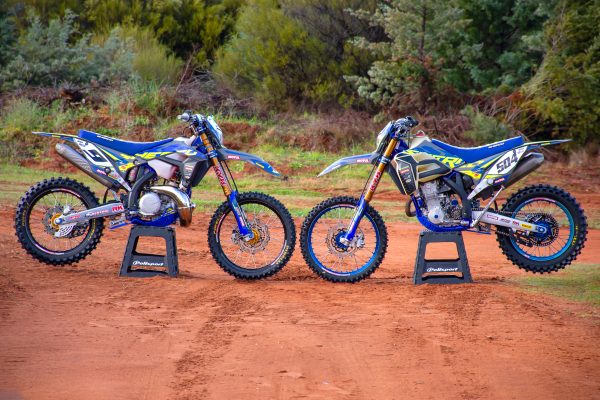
THE THUMPER
I have ridden both of these Sherco models in standard trim quite a bit over the last few years, so I was keen to experience both of them in desert race spec. I jumped onto Nathan Trigg’s 500 to kick things off and straight away a few things stood out; the desert-spec seat was very soft and comfortable and the handlebars were rolled a long way back for someone of Nathan’s height (188cm).
As soon as I fired the big 500 thumper into life it was obvious this was no standard engine. It revved quickly and freely, and the exhaust note was crisp. Once out circulating on our test loop I could really feel the differences that I could hear. With very good response right off the bottom and through the midrange, acceleration out of corners was impressive, and up top it revved on reasonably well for a 500 four-stroke.
The engine worked best if I kept it around the lower end of the midrange, as it provided great traction and didn’t produce much engine inertia. For a desert-spec big-bore thumper, the power this bike makes is definitely good enough to run at the front of the Hattah Desert Race.
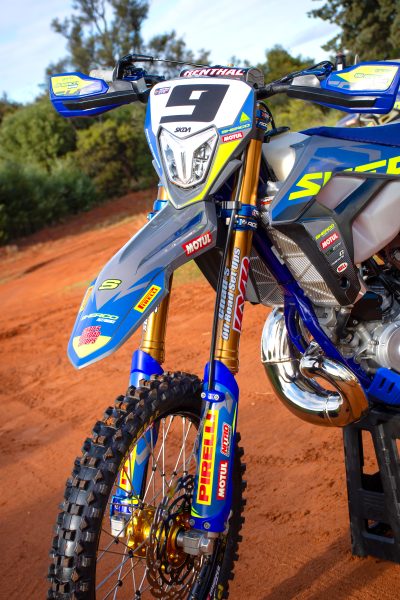
Handling-wise, Nathan’s setup quite lazy. What I mean by that is that it doesn’t do anything in a hurry; the front end feels very raked out and this gives it a slow feeling when turning in and around corners. On the fast open sections I didn’t mind this feel as it was super stable but in the tight twisty sections I found it required a lot of effort when changing direction or trying to hit inside lines.
The rear shock on Nathan’s bike reasonably compliant and comfortable, and it soaked everything up quite smoothly. The only time I could fault it was on low-speed sharp hits as it would bottom out too easily for my liking.
Overall Nathan’s setup, apart from his low handlebar position, was very close to what I expected it to be, as he mostly rides sand and Hattah-style tracks in the Mildura region.
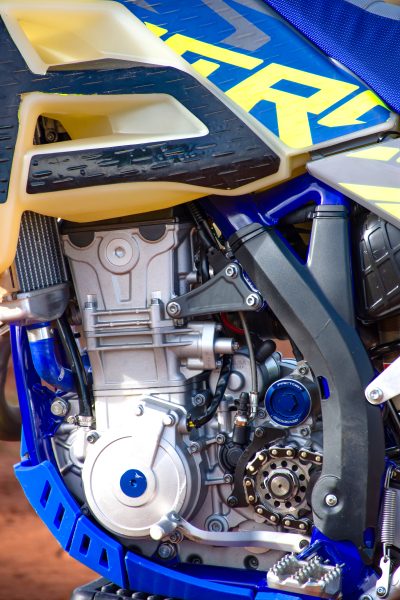
THE SMOKER
Jumping onto Jonte Reynders’ 300 two-stroke, the first thing I noticed was how much smaller it felt as a result of of the standard-size fuel tank he runs. When sitting on Jonte’s bike everything else felt quite normal and neutral to me. As soon as I fired the 300 into life I could feel and hear that the carburettor was definitely set up on the richer side. It was not burbling rich, just not crisp like a perfectly jetted one.
Out on the track I was instantly impressed with the bottom-end throttle response and torque of the engine, as it felt significantly stronger than a standard one. In the midrange it really came to life and was even more responsive; it felt like a MX-spec engine. This gave the bike a very light and playful feel. Up top the engine signed off quite early though but providing I kept it in the low to mid region it felt super strong and was more than capable of blasting out of any tight corner in a hurry.
Jonte’s overall setup was quite natural, and the bike turned in and out of corners with ease, and as the two-stroke engine produces next to no engine inertia, I could easily stop or put the bike on any line I wanted.
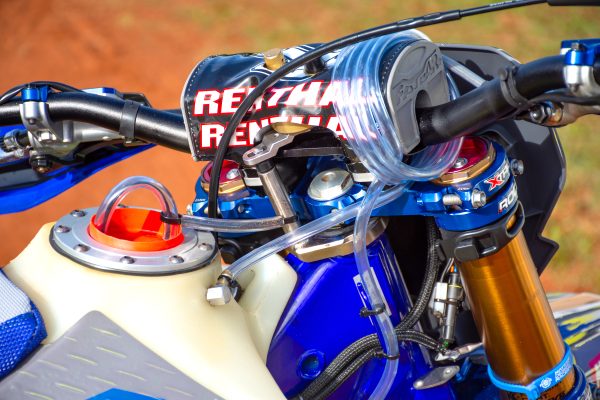
The suspension package on this machine was on the firm side for me in desert conditions. Up front the fork was perfect when I charged hard into any sized bump or obstacle, but on the small choppy high-speed bumps it produced a firm feeling that would tire me out over four hours of racing.
Out the back the shock was also firm, but it tracked perfectly straight and felt quite comfortable providing I kept the throttle open and the shock loaded up. Out on the fast choppy sections is the only place I would complain about the shock being on the firm side and giving the rear end a slightly unsettled feel.
Overall Jonte’s setup is exactly what you would expect from a hard-charging and fit AORC racer.
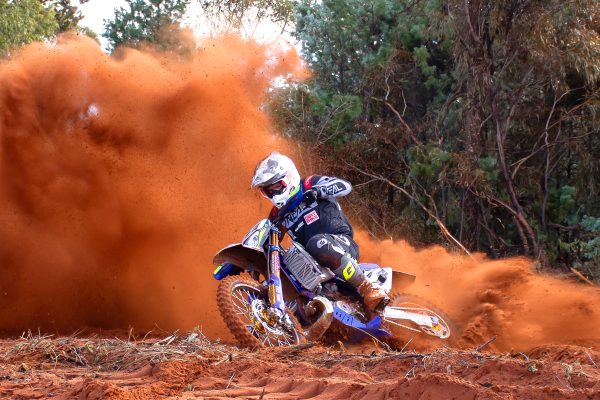
HOW DO THEY COMPARE?
In the handling department these two bikes are very different beasts in this Sherco 500 SEF Factory v 300 SEF Factory test.
Nathan’s thumper provided the most comfort; it felt the most stable at high speeds but would take a bit more effort in the tighter sections to hit my preferred lines.
Jonte’s smoker, on the other hand, is more than capable of hitting any line with ease. In the tight twisty sections I definitely used less energy and felt faster. Its only downside is you don’t get much of a rest on the high-speed choppy sections as it doesn’t settle like the thumper.
If I had to choose one of these bike over the other just based off the suspension feel and turning capability, it would be Nathan’s 500 because over the duration of Hattah I’d ultimately use less energy riding it.
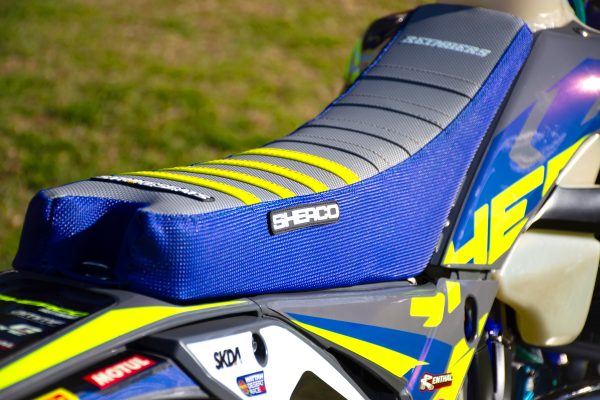
In the engine department, riding both bikes back-to-back and not looking at any times or GPS speeds, I didn’t feel like there was a huge difference between the two. They both had tonnes of bottom-end power and torque, and both produce a very strong and punchy midrange, so it’s only up top where the 500 thumper continues to rev and produce noticeably more power than the 300 smoker.
Finding traction was slightly easier on the 500 too, but other than that I still didn’t really prefer one engine over the other.
It wasn’t until I started running my GPS on the straights that it was clear one bike had a huge consistent speed advantage on the fast sections. On basically every straight the 500 four-stroke was a good 10-14km/h faster than the 300 two-stroke… every time. If I hadn’t seen the GPS numbers, and you made me choose either bike, it would have been a hard decision. After looking at the GPS data though, and with Hattah being made up of roughly 40 high-speed straights, I would never choose the two-stroke due to it giving away way too much straight-line speed to the four-stroke on every fast straight.
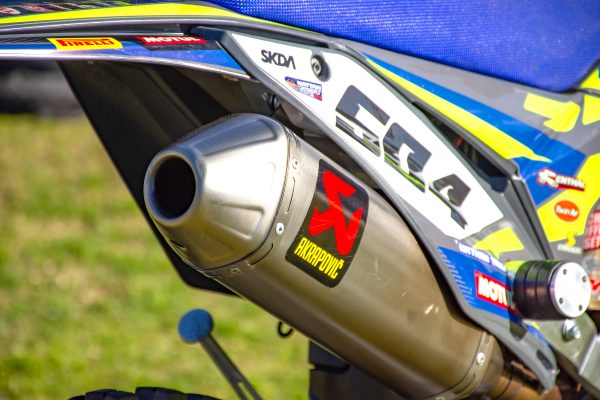
NATHAN TRIGG’S – 500 SEF FACTORY FOUR-STROKE #504.
Triggy’s big 500 features a factory-ported cylinder head from France paired with standard valves, camshafts, crankshaft and piston. It has a 49T rear sprocket, and an STM diaphragm spring clutch borrowed from the 300 two-stroke model to allow for quicker engine spin-up.
The muffler on the standard Akarapovic exhaust system is shortened for added aggression. Trigg also ran a standard tank for Saturday’s prologue, then switched to the 13L larger tank for a two-lap pit-stop strategy during the main race.
Trigg also prefers foam grips for better comfort during the gruelling four-hour event.
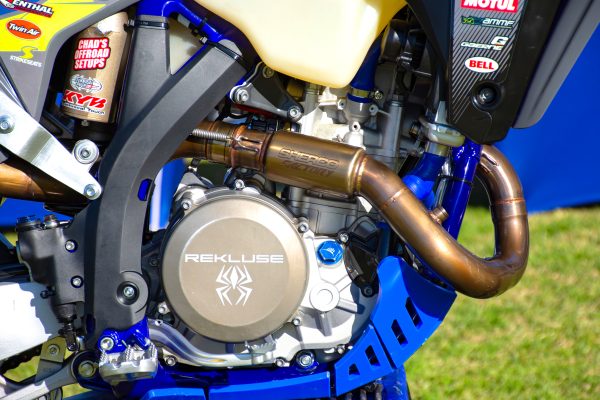
JONTE REYNDERS’ 300 SE FACTOY TWO-STROKE #9
Reynders’ 300 banger is equipped with a TSP cylinder head, medium compression insert, an ECU tune and a richly jetted carburettor setup (specs below). Reynders switched to a 19-inch rear wheel with a 49T sprocket.
The standard SPES expansion chamber is paired with an Akarapovic titanium silencer from the Sherco Racing Parts catalogue for added performance. Reynders also ran a customised standard fuel tank to accept a dry break receiver, allowing for quick pit stops each lap. Unlike Trigg, Reynders had to pit every lap.
Carburettor settings:
Needle N8RF
Clip position 3
Pilot Jet 45
Main Jet 175
Premix Motul 800
Ratio 45:1
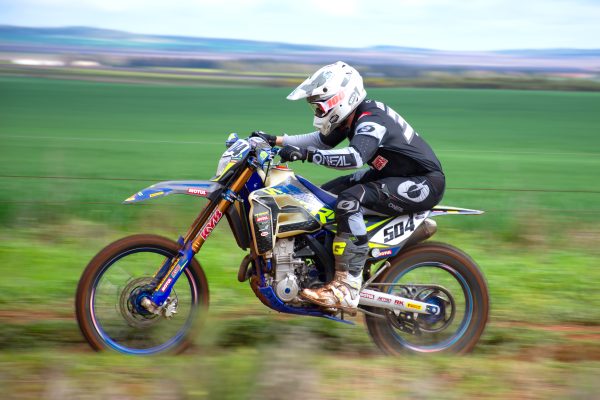
CUSOM KIT ON BOTH BIKES
Both bikes benefitted from Chad’s Offroad Setups custom-tuned Hattah suspension settings, Scotts steering dampers, and AXP 8mm heavy-duty bash plates with Linkage guards.
The bikes also supported Moto-Master oversized 270mm Flame front rotors, heavy-duty tubes in the rear and Nitromousse inserts in the front, shod with Pirelli Scorpion MX32 rubber all round. X-Trig triple clamps with PHDS bar mounts, and Renthal 821 Fatbar handlebars capped off the cockpit, while they also ran desert-spec Stegpegz and massive IMS desert footpegs. Both bikes were stripped of non-essential components (speedometer, taillight assembly, lighting wiring harness).
Both bikes adorned SKDA’s new fluoro graphics paired with the team-issued desert-spec seat foam and cover from Strike Seats.
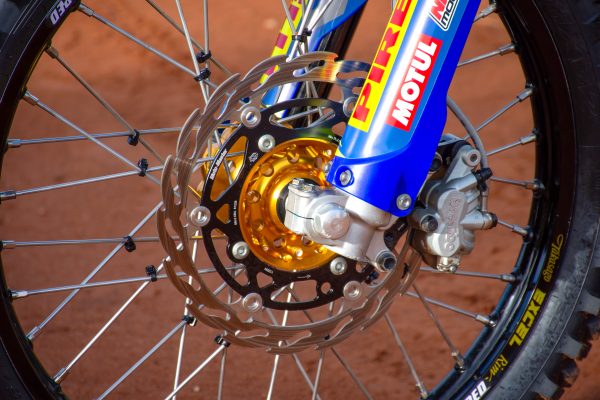
RACE STATS
Prologue
P17 Nathan Trigg 4:59.267
P18 Jonte Reynders. 4:59.294
Class
P4 Nathan Trigg Over 450 4-stroke
P1 Jonte Reynders 251 and over 2-stroke
Outright
P9 Nathan Trigg Best lap 29:18.039
P14 Jonte Reynders. Best lap 30:31.438
